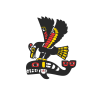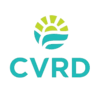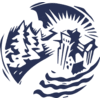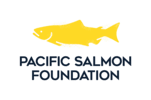Susan Down, LocalEye.ca, May 23 2016
We like to count in the Cowichan Valley – salmon, raindrops, lake levels. After all, management guru Peter Drucker said that you can’t manage what you can’t measure.
But measuring is only half the job. Once they have the numbers, leaders can then decide which direction to take. In the CVRD, we should be acting, fast, to handle the drought conditions that could seriously harm our region.
A staff report to be presented to the CVRD’s regional services committee on May 25 has some grim statistics. The snow index at Jump Creek was eight per cent of normal. The Chemainus River’s 7-day-average streamflow was the lowest on record. Rainfall in North Cowichan in April was 22 per cent of normal.
The impact is felt on aquifer levels as well as surface water. The Cobble Hill observation well is at the lowest level ever for this time of year. On top of that, the water use has increased by 20 per cent over last year as gardeners and farmers resort to early irrigation. And Catalyst has received emergency authorization to drop river flows to 4.5 cubic metres per second, a few weeks earlier than normal so the water will last until fall rains come.
Ontario received plenty of ridicule for its just-released climate action plan that one pundit called “economic assisted suicide.” Certainly it sounds like an expensive plan, but at least it’s a plan.
In the Cowichan Valley, the Cowichan Watershed Board and citizens’ groups such as the Cowichan Lake and River Stewardship Society and One Cowichan are taking action through conservation campaigns and salvaging stranded salmon fry. (related stories)
Elected leaders – both local and provincial – need to start paddling as well. It means asking the hard questions about the fate of the Catalyst pulp mill, or the harm done by clearcut logging. And they need to demand that some other measurements be completed.
For example, after years of talk, we don’t have the definitive engineering measure to determine whether we can add another 12 inches of height to the Lake Cowichan weir in the form of flash-boards that can store more water in the winter.
A new snow pillow monitoring system installed last fall has never worked properly. This was supposed to offer a more accurate measure of our watershed compared with the Jump Creek site that flows into the Nanaimo watershed. Who will pay for the improvements and why didn’t the contractors get it right?
Another misleading measurement is the province’s definition of drought conditions. Vancouver Island is considered one area. Because of more rain in the north end of the Island, Cowichan is considered Level 1 – normal when it is actually Level 3 – very dry. This brand of statistics is like adding up the makeshift shelters at Victoria’s Tent City and the mansion-dwellers in nearby Rockland and then concluding the average person lives in a middle-class three-bedroom home.
The staff report also states that there is little budget for communications. Yet the pile of cash slotted for economic development is generous. It seems to me that discussing the elusive pot of gold at the end of the Ec Dev rainbow is completely misguided while this environmental disaster looms. No rain = no rainbow. And that could turn off the tourist taps for a region that benefits from visitors attracted by water recreation and our food and wine culture as well.
As usual, I think the inspired leadership will come from the middle, from you and me. Let’s get together to find a solution. We need to act boldly. The time for just counting is over.
 Email
Email



